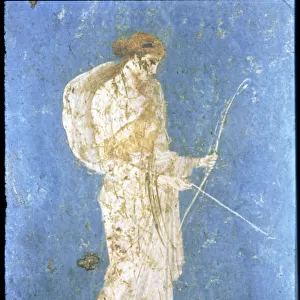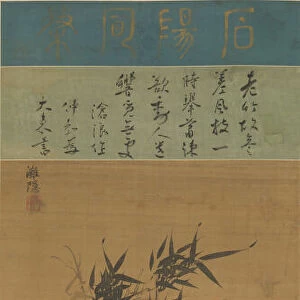Home > Europe > United Kingdom > England > Cleveland
Egret and Reeds, late 1800s. Creator: Yang Ki-hun (Seuk-Eun) (Korean, 1843-1919?)
![]()

Wall Art and Photo Gifts from Heritage Images
Egret and Reeds, late 1800s. Creator: Yang Ki-hun (Seuk-Eun) (Korean, 1843-1919?)
Egret and Reeds, late 1800s. In this hanging scroll, an egret walks along the shores of a salt marsh where reeds abundantly grow. Native to Pyongyang, the artist Yang Ki-hun had no rival in bird-and-flower themes. The Taedong River estuary, one of Pyongyangs beloved natural sites, may have been Yangs favorite spot to observe and sketch various water birds. Yang treated his subjects of flora and fauna with an observant naturalists view, yet his choice of subjects--an egret and reeds--is deeply rooted in traditional symbolic language: the egret stands for the scholarly reclusive life, while reeds indicate humility and modesty
Heritage Images features heritage image collections
Media ID 19619835
© Heritage Art/Heritage Images
1392 1910 Hanging Scroll Ink On Paper Joseon Dynasty Korea Korean
FEATURES IN THESE COLLECTIONS
> Europe
> United Kingdom
> England
> Cleveland
EDITORS COMMENTS
In this print titled "Egret and Reeds, late 1800s" we are transported back to a time when the beauty of nature was immortalized on paper. Created by the talented Korean artist Yang Ki-hun (Seuk-Eun), this hanging scroll captures an egret gracefully strolling along the shores of a salt marsh adorned with abundant reeds. Yang Ki-hun, hailing from Pyongyang, possessed an unparalleled skill in depicting bird-and-flower themes. It is believed that his favorite spot for observation and sketching was the Taedong River estuary, a cherished natural site in Pyongyang. With an observant naturalist's eye, Yang treated his subjects of flora and fauna with great detail. However, there is more to this artwork than meets the eye. The choice of an egret symbolizes the scholarly reclusive life while reeds represent humility and modesty - both deeply rooted in traditional symbolic language. Through this composition, Yang not only showcases his artistic prowess but also conveys profound meanings embedded within Korean culture. This heritage art piece is rendered using ink on paper during Korea's Joseon Dynasty (1392-1910). Preserved by The Cleveland Museum of Art, it stands as a testament to Yang Ki-hun's mastery and serves as a window into Korea's rich artistic heritage. As we gaze upon this remarkable print by Heritage Art/Heritage Images, we are reminded of nature's elegance intertwined with cultural symbolism that transcends time itself.
MADE IN THE USA
Safe Shipping with 30 Day Money Back Guarantee
FREE PERSONALISATION*
We are proud to offer a range of customisation features including Personalised Captions, Color Filters and Picture Zoom Tools
SECURE PAYMENTS
We happily accept a wide range of payment options so you can pay for the things you need in the way that is most convenient for you
* Options may vary by product and licensing agreement. Zoomed Pictures can be adjusted in the Cart.



